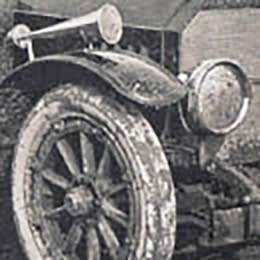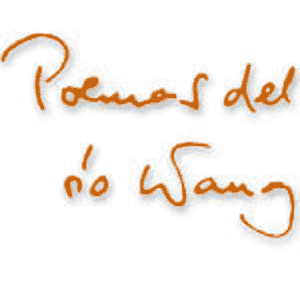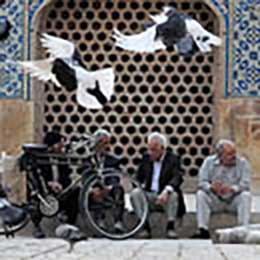Arriving at Sighetu Marmației, the first thing I see is a camel. Right after the town sign — its head adorned with a halter in red-white-green, the national colors of Hungary, its legs shackled. While I watch, it doesn’t stoop once to graze, turning away in disgust from the lush, flowery meadow. Gyűlölöm a vadvirágos rétet, “I hate flowery meadows”, as the old Hungarian chanson says. Its hump lists slightly, like after a long night and not enough water. Its head, like a compass needle, points firmly north — toward the great body of water, the Tisza river. Suddenly, I get unbearably thirsty.
Driving farther into town, I follow the emblem of a country that doesn’t exist. The red Ruthenian bear was once married to the blue and yellow Ukrainian stripes by the Czechs, back in 1920, when they annexed northeastern Hungary into the new Czechoslovakia under the promise of autonomy. The autonomy never came — but the bear made it all the way to the vault of Prague’s St. Vitus Cathedral, proudly painted among the coats of arms of the Habsburg lands. Having lost faith in both Czech and Ukrainian masters, today’s Rusyns place their emblem on the Russian tricolor — they are called “Little Russians” after all. There are enough of them in Maramureș to have a Ukrainian-language high school in Sighet. The dreamed-of “Bear State,” stretching from Przemyśl to Verkhovyna, would even swallow a slice of Romania — a Ruxit would drag along the left bank of the Tisza. How remarkable that the Romanian state tolerates this symbolic nibbling of its sovereignty so calmly here on the Rusyn–Rusyn border, while it raises such a fuss about the Székely flag — poor Székelys, with no neighboring country left to secede to.
In front of the neo-brutalist Greek Catholic church, opposite the Ave Maria thrift shop, another mythical creature awaits. A scrawny wolf, slinking down from the mountains, strikes a triumphant Roman pose on the square of the once-Jewish town and proclaims in Latin that he intends to send his two nursing pups, Daco and Roman, to the Latin high school — so that one day they, too, may become as learned as Prof. Univ. Dumitru Protase, member of the Romanian Academy. The whole identity drama feels familiar — in the Slovak village of Csömör, the pedestal of the “Truncated Hungary” monument proudly declares: “This nation can still prevail — it is the seed of Attila.” In the distance, beyond the Lidl, a fortress rises, built of the finest reinforced concrete, lest the Dacian identity be left without a home.
The great survivor among all these competing identities greets me on Sighet’s main square. In the nearly hundred years since Trianon, thousands have passed by the gate, yet no one ever noticed the Hungarian royal coat of arms perched on its iron crest like a daytime owl. Even in its day, the symbol was born in illegality: after the defeat of the 1848 revolution, Hungary was officially abolished and divided into five Austrian districts. The iron ornament, erected quietly in 1862 as an act of protest, has remained ever since, after a short legal period turning back to its original, quietly rebellious function.
In the window of the main square’s bookshop, Romanian royal biographies — monarchy is having a second bloom here too. The lady at the counter still saw the last Romanian king. Her father was a gendarme in Miskolc during Hungarian times; she herself taught high school under Ceaușescu. When the new regime offered the state bookshop for privatization, she bought it — and has sat there ever since, in a lace-collared blouse straight out of King Michael’s era. Remembering our last talk, I greet her in Hungarian. She answers only in Romanian. When I switch to Romanian, in the spirit of reciprocity, she responds in Hungarian — softly accented, but excellent. I buy Romanian books about Maramureș — handsome photo albums, the history of local brandy-making, an encyclopedia of painted wooden churches. She slips a pen in as a gift. I clip it into my breast pocket, like an old school inspector. She nods approvingly.
Jóska, the butcher at the Sighet market, has crossed his cleavers on the shop sign, but that doesn’t make the livestock any safer under the Damoclean blades. In the adjoining canteen one eats mici, crispy roast chicken, and the best tripe soup around. The market itself overflows with fresh produce from the surrounding Rusyn, Romanian, and Hungarian mountain villages. One of the vendors, seeing we’re outsiders, greets us in French — then, realizing who we are, switches to Hungarian. “I can speak many languages,” she boasts. “Romanian, Hungarian, Rusyn, French — and my own.” “And what’s your own?” I ask. Her face takes on a mix of mischief and shyness. “Well,” she says after a pause, “should I tell you? It’s Roma.”
At Elie Wiesel’s birthplace, now the Museum of Maramureș Jewry, a black flag flutters. There’s no sign explaining why. It’s Monday, the museum’s usual day off — yet today, oddly, it’s open.
On Basarab Street, the synagogue bears a black flag too, again without explanation. The building — the only one of the six synagogues to survive, which had served the forty thousand Jews once living in Sighet — was built in 1902 for the “Sephardic” rite, a dainty and misleading label for the Galician Hasidim, much like “Mosaic faith” is for Jews. Every window displays the same printed plea in accentless Romanian, born of sheer desperation. The backstory can only be guessed at:
“Dear fellow citizens! With respect and friendship, we ask you to treat our synagogue as you do your own churches. We all share the same God — merciful, but He punishes those who desecrate His sanctuaries. The Jews have done you no harm. Perhaps when there were more of us here, life was better. Let us not have our town known as a home of antisemites (and Bacchus’ followers). Thank you for your understanding.”
Before the war, the Beregszász–Kőrösmező railway ran along the Tisza, switching sides as the terrain allowed. After 1920, when the river became a border, a soldier boarded each train at the Romanian bridgehead, locking the doors until it crossed back into Czechoslovakia. After 1945 even that ended — such antics didn’t fit the transparent camaraderie of Soviet–Romanian friendship. On the Soviet, later Ukrainian side, weeds grew over the tracks and the depots collapsed, yet the binaries are still maintained — in case one day the railway is needed again, for they know that those can never be replaced. On the Romanian side, a locomotive still waits on a siding at Sighet station, patient for the line’s reopening.
“Foraging in the forest was a sure way to make a living in lean times. Along with the state’s sack, one could fill his own too. Blueberries, blackberries, or chanterelles — they brought real joy. Don’t misunderstand — we didn’t sell to some fancy cannery, only to the nearby reserve, where bears were kept in a ruined chapel and abandoned mines.”
“The road was blocked by a blue-and-yellow barrier, beside it a small guardhouse and a shabby army tent full of shivering soldiers. This was the only border crossing in the Sinistra district, and even here the gate was lifted only once a week, for a few hours, every Thursday morning.”
The border guard woman is no Coca Mavrodin. “Sweetheart,” she says when I try to drive across the border in a car borrowed from Mustafa Mukkerman, “this doesn’t have a stamp.” “It doesn’t,” I reply. “In our country, we don’t need stamps — just the owner’s signature.” She shakes her head, then waves me on. And so I cross the Tisza bridge — the Hungarian–Hungarian border running through a single city — from Sighetu Marmației to Solotvyno.

























Add comment